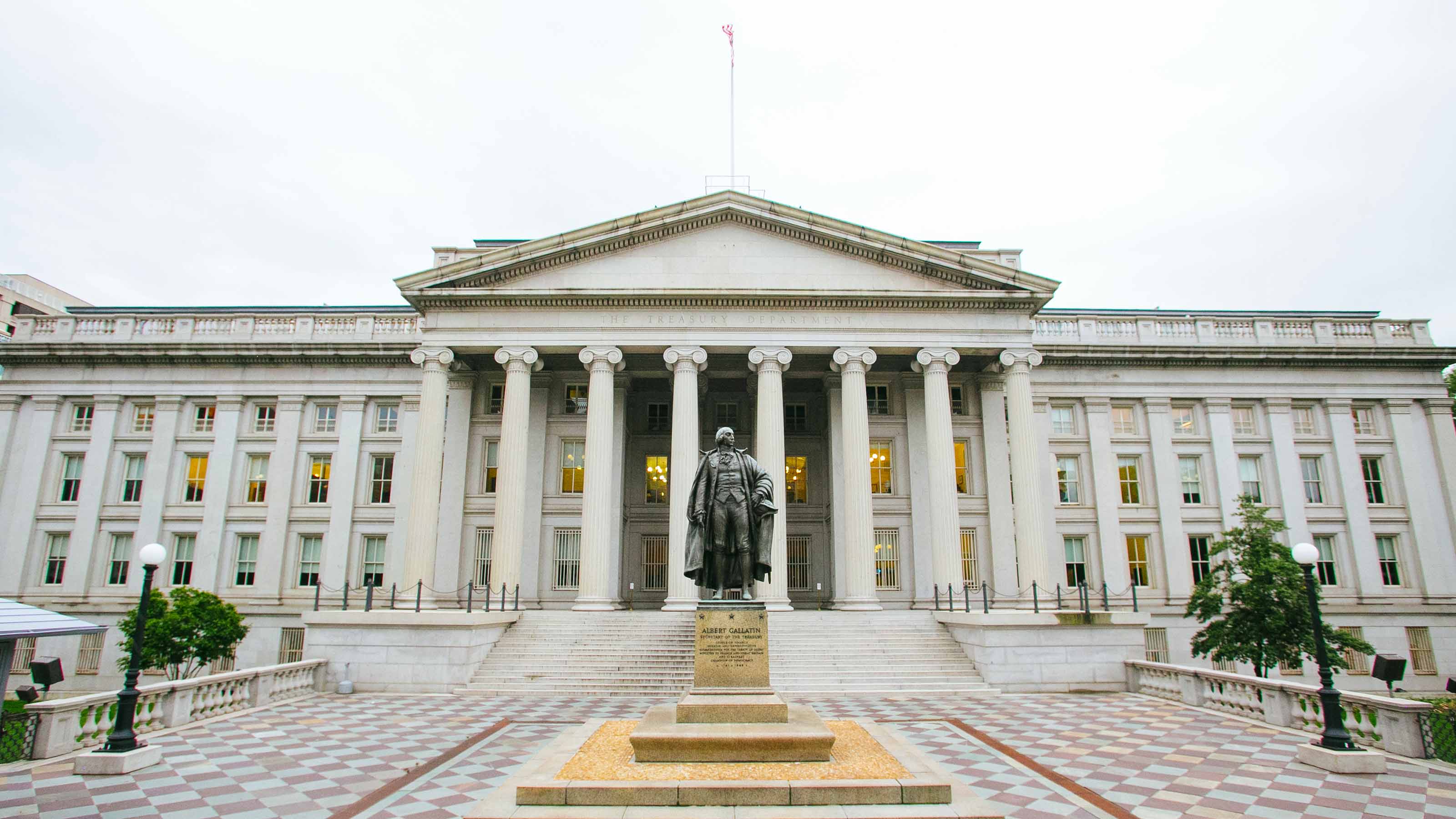An Unbelievable Yield
You can get 5% or better in a tax-free money-market fund. Is this for real? For now, it is.

Telephone reps at mutual fund companies usually read from a script. Not the fellow I got Monday afternoon on Vanguard's line, name of Irwin. He was a live wire, speaking extemporaneously and with enthusiasm when I asked whether it's true that Vanguard Tax Exempt Money Market Fund (symbol VMSXX) yields more than 5%. In fact, on September 29, the fund's seven-day yield was a fat 5.18%.
"I know, is this a typo?" Irwin said, anticipating my next words by saying he "jumped on that" yield with his own money and got his brother in as well. "I don't know if you'll get this break for three days or three weeks, but that's the seven-day yield," he went on.
The man sounded amazed, and why not? Here's something in the midst of all these disasters that rewards the ordinary investor. One week earlier, the same fund yielded 4.4%. Early in 2008 it was in the twos. The ten-year average return is 2.5%, which is strong considering the category average for tax-free money funds over the same ten years is 1.9%.
From just $107.88 $24.99 for Kiplinger Personal Finance
Become a smarter, better informed investor. Subscribe from just $107.88 $24.99, plus get up to 4 Special Issues

Sign up for Kiplinger’s Free Newsletters
Profit and prosper with the best of expert advice on investing, taxes, retirement, personal finance and more - straight to your e-mail.
Profit and prosper with the best of expert advice - straight to your e-mail.
This 5%-plus payout is not only a stunning number. It's in utter contrast to the action in money-market funds that own U.S.-government debt. Their rates are falling as Treasury-bill yields sink close to zero.
Soaring yields usually suggest that an income investment is becoming riskier. But mutual fund managers insist that tax-free money funds' market values ($1 a share) are secure. Vanguard and many others say this on their Web sites. Fidelity answered a Kiplinger's query by saying its tax-free municipal money-market fund "maintains the highest standards of safety and liquidity." Brand-name credibility is at stake, though the risk has been mitigated because the Treasury has set up a temporary program to insure all money funds, both taxable and tax-exempt.
However, as much as we trust the people and the companies behind these soothing thoughts, we've heard a lot of assurances lately without real reason to be assured. So what are we really getting into here?
I studied the reports of several tax-free money-market funds to see what's inside. Of course, holdings of such funds change quickly, and what you see on the most recent quarterly report probably isn't in the fund now. Still, the missive provides a window on the types of things a money fund buys.
As you would expect, you are investing in an assortment of short-term debt, repayable over terms of one day to several months. The borrowers are states, cities, counties, water and sewer authorities, public colleges, highway systems, local school boards and so on. These authorities need the short-term cash markets because they collect taxes and other revenues irregularly or infrequently but have constant expenses. Their alternative is to sell regular bonds, but this super-short-term borrowing is more flexible and usually cheaper.
Tax-free mutual funds presently hold $485 billion, 14% of all money-fund investments. It's a large, essential business, analogous to the commercial, paper market that corporations tap to borrow on a short-term, as-needed basis.
The overnight corporate-debt market has from time to time this year run into liquidity problems, but there have been no reports of localities unable to pay teachers and police officers because Wall Street locked up the municipal credit window. Nor have any tax-free money funds cut their net asset value below $1, as one taxable fund did. So far, this area is unscathed.
That makes this yield spike all the more mysterious. Given that so much money is flooding into Treasuries of all maturities regardless of the minuscule yields, you would think municipal debt -- almost as safe as the federal government's debt because it's also backed by the power to tax -- would also be yielding less, not more.
Paul Brennan, a municipal-bond manager for Nuveen, traces the rise in tax-free yields to the government's takeover of American International Group and to the banks' need for actual cash. Banks and other stressed-out financial institutions have been forced to dump (his word) better-quality assets such as short-term municipal debt to stay as liquid as possible, lest they end up in the afterlife with Washington Mutual and Wachovia.
Solvent institutions want to buy these securities, high-quality as they are, only if they get paid a premium. "Many nontraditional investors have come into this market," Brennan says, including endowments and foreigners, the kind of investors who have no use for a tax exemption, just the actual yield. In other words, to them, 5% isn't the equivalent of an 8% taxable yield. It's just 5%. In short, says Brennan, this is all about the cancer inside the credit markets and not at all about whether the city of Chicago is stuck for money.
But at some point, Brennan agrees, the funds' yields will fall, for several reasons. One is that a tsunami of cash coming into these funds will eventually overwhelm the supply of suitable tax-free investments and force the funds to hold more cash. Because they are pledged to pay tax-exempt income, they can't invest in taxable assets, so you'll have some nonearning assets diluting the yield.
Another reason is that long-term Treasury yields will eventually zoom upward. Then there will be no need for a government agency or a pension fund to own tax-free assets. They'll leave the buying to individuals, who will benefit at yields as low as 3%.
Then, as the Federal Reserve and Congress feed more money into the banking system, localities will be able to find money for less. Mike Long, the treasurer of Klamath County, Ore., says localities in Oregon and elsewhere participate in state-run pools to provide credit to local entities, such as school and fire districts. Long says a fire district in his county was able to go to a nearby bank and borrow for 3%, which he described as "a very good rate."
Banks will bring down the rates if they have enough money to lend. But that depends, like so much else, on the interlocking and often confusing financial mess that's coming apart at the seams and needs to be stitched back together again.
Profit and prosper with the best of Kiplinger's advice on investing, taxes, retirement, personal finance and much more. Delivered daily. Enter your email in the box and click Sign Me Up.

Kosnett is the editor of Kiplinger Investing for Income and writes the "Cash in Hand" column for Kiplinger Personal Finance. He is an income-investing expert who covers bonds, real estate investment trusts, oil and gas income deals, dividend stocks and anything else that pays interest and dividends. He joined Kiplinger in 1981 after six years in newspapers, including the Baltimore Sun. He is a 1976 journalism graduate from the Medill School at Northwestern University and completed an executive program at the Carnegie-Mellon University business school in 1978.
-
 Q4 Post-Mortem From an Investment Adviser: Year of Resilience
Q4 Post-Mortem From an Investment Adviser: Year of ResilienceFinancial pro Prem Patel shares his take on how markets performed in the fourth quarter of 2025, with an eye toward what investors should keep in mind for 2026.
-
 'Donroe Doctrine' Pumps Dow 594 Points: Stock Market Today
'Donroe Doctrine' Pumps Dow 594 Points: Stock Market TodayThe S&P 500 rallied but failed to turn the "Santa Claus Rally" indicator positive for 2026.
-
 The Wealth Equation: Balancing Money and Stress
The Wealth Equation: Balancing Money and StressSponsored Don’t let assets be a liability that strains your family.
-
 The Most Tax-Friendly States for Investing in 2025 (Hint: There Are Two)
The Most Tax-Friendly States for Investing in 2025 (Hint: There Are Two)State Taxes Living in one of these places could lower your 2025 investment taxes — especially if you invest in real estate.
-
 The Final Countdown for Retirees with Investment Income
The Final Countdown for Retirees with Investment IncomeRetirement Tax Don’t assume Social Security withholding is enough. Some retirement income may require a quarterly estimated tax payment by the September 15 deadline.
-
 Why Investors Needn't Worry About U.S. Credit Downgrade
Why Investors Needn't Worry About U.S. Credit DowngradeFitch Ratings The United States saw its credit rating downgraded for just the second time in history, but experts aren't worried about the long-term damage to stocks.
-
 Income-Investing Picks for a Recession
Income-Investing Picks for a RecessionInvesting for Income Some consequences of an economic downturn work to the benefit of fixed-income investors. Here are three fund ideas that fit the bill.
-
 Dogs of the Dow Are 2022's Best in Show
Dogs of the Dow Are 2022's Best in Showdividend stocks Some of the best investments for income investors in a volatile 2022 have come from the Dogs of the Dow.
-
 Bond Values in a Volatile Market
Bond Values in a Volatile MarketInvesting for Income While the market's instability may not be over just yet, the latter half of the year should be less daunting – and possibly more rewarding – for investors.
-
 Should You Buy Bonds Now? What To Consider
Should You Buy Bonds Now? What To Considerbonds The fixed-income market has been turned on its head in recent years, but there are still opportunities for those looking to buy bonds again.
-
 Dividend Dates: A Beginner's Guide
Dividend Dates: A Beginner's Guidedividend stocks Everything you need to know about ex-dividend dates, dividend announcements and other parts of the dividend calendar.